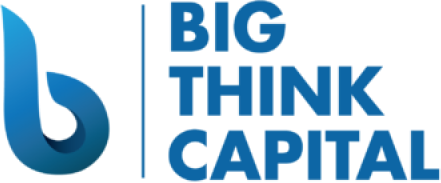The Impact of Fed’s Recent Interest Rate Decision on Small Businesses
Estimated Reading Time: 5 minutes
- Explore non-traditional financing options for your small business.
- Enhance your cash management practices to withstand economic volatility.
- Foster strong and transparent relationships with lenders.
Table of Contents
- Understanding the Fed’s Role in Interest Rate Decisions
- Recent Rate Changes and Their Impact on Small Businesses
- Strategies for Maintaining Robust Working Capital
- Staying Informed on Economic Trends
- Practical Takeaways for Business Owners
- Conclusion
Understanding the Fed’s Role in Interest Rate Decisions
The Federal Reserve, often referred to as the Fed, is the central banking system of the United States, and it plays a critical role in the country’s economy. Its decisions on interest rates are aimed at promoting maximum employment, stable prices, and moderate long-term interest rates. Changes in the federal funds rate have a ripple effect throughout the economy, influencing everything from borrowing costs for businesses to consumer spending.
As of early 2025, the Fed is grappling with rising inflation and fluctuating economic growth rates. The decision to modify interest rates can feel like a tightrope walk between fostering growth and curbing inflation. For small business owners, understanding these decisions is crucial, as they directly impact the cost of financing and the overall economic climate.
Recent Rate Changes and Their Impact on Small Businesses
Due to recent economic pressures, the Fed has raised interest rates several times over the past year. As of January 2025, the federal funds rate stands at 5.25%, significantly higher than the historically low rates seen during the pandemic. For small businesses seeking financing, this increase means higher costs for loans and credit lines, directly affecting cash flow.
According to recent studies by the Economic Policy Institute, small businesses are facing increasing challenges in securing affordable financing. The report indicates that 67% of small business owners cite high-interest rates as a primary barrier to accessing funds. With limited resources, many businesses may find it challenging to navigate these waters without a solid strategy.
Strategies for Maintaining Robust Working Capital
The heightened interest rates should not deter small business owners from seeking financing, but it does require a well-thought-out approach. Here are three strategies to help maintain a robust working capital position:
-
- Diversify Funding Sources
Relying solely on traditional bank loans may not always be the best option, especially with rising interest rates. Consider exploring alternative lending options such as working capital advances, equipment financing, and merchant cash advances. Each of these options can provide flexible funding without the long processing times or strict requirements associated with traditional banks.
-
-
- Working Capital Advances: These allow you to access funds based on your future sales. This inexpensive way can help manage day-to-day operations without a heavy debt burden.
- Equipment Financing: If you need machinery or technology, consider financing options that allow you to spread the costs over time while securing necessary assets.
- Merchant Cash Advances: A quick funding solution based on projected credit card sales can be a lifeline during cash flow downturns.
-
By diversifying funding sources, you can mitigate the impact of interest rate hikes.
-
- Improve Cash Flow Management
Effective cash flow management is essential for navigating economic uncertainties. Consider implementing the following practices:
-
-
- Budgeting: Develop a detailed budget that projects income and expenses over the upcoming months. Identify potential shortfalls and develop contingency plans.
- Invoicing: Accelerate your invoicing process. Ensure you bill customers promptly and consider offering discounts for early payments to boost cash flow.
- Expense Management: Regularly review your expenses to identify areas for cost-cutting. Negotiate better terms with suppliers and seek out competitive pricing.
-
Streamlining your cash flow will enhance your business’s ability to absorb rising financing costs and unexpected expenses.
-
- Build Strong Relationships with Lenders
Maintaining open lines of communication with your lenders can significantly impact your financing options. Here are a few tips for building strong relationships:
-
-
- Stay Transparent: Keep your lenders informed about your business’s cash flow and performance. This transparency helps them understand your situation and may provide you with more flexible terms.
- Seek Guidance: Don’t hesitate to ask your lender for advice on navigating the current financial landscape. They can offer insights into potential funding options that you may not have considered.
- Leverage Loyalty: If you have a history of on-time payments and responsible borrowing, leverage that relationship to negotiate better terms or rates in your next round of financing.
-
A robust relationship with your lender can position you favorably when seeking new financing arrangements.
Staying Informed on Economic Trends
The ability of small business owners to respond to economic changes hinges on staying informed. With ongoing shifts in interest rates, economic indicators, and consumer spending patterns, it’s essential to keep abreast of these trends. Regularly reviewing economic news from sources like the Wall Street Journal or Bloomberg can provide valuable insights into the Fed’s decision-making process and its potential implications for small businesses.
Additionally, attending workshops and seminars on small business finance can help deepen your understanding and prepare you for future economic changes. Connecting with industry groups can also provide networking opportunities that may lead to new funding avenues.
Practical Takeaways for Business Owners
To summarize the key insights for small business owners navigating the recent interest rate environment:
-
-
- Explore Non-Traditional Financing: Look for various funding sources such as working capital advances and equipment financing to avoid heavy reliance on traditional loans.
- Enhance Cash Management Practices: Develop budgets, streamline invoicing, and carefully monitor expenses to maintain a healthy cash flow.
- Foster Strong Lender Relationships: Communicate transparently with lenders and leverage your borrowing history for better financing terms.
-
Conclusion
The Federal Reserve’s recent interest rate decisions represent both challenges and opportunities for small businesses. By embracing alternative funding solutions, enhancing cash flow management, and fostering strong relationships with lenders, small business owners can navigate these changing economic conditions with confidence.
For tailored funding solutions that align with your business goals, explore our offerings at Big Think Capital. Our expert team is ready to provide you with the guidance you need to secure the financing that is right for you.
Visit us at bigthinkcapital.com or speak with one of our funding experts today. Let’s work together to ensure your business has the resources it needs to thrive.






